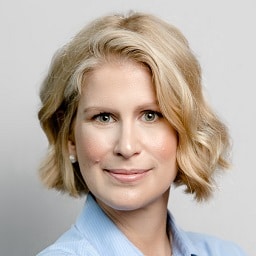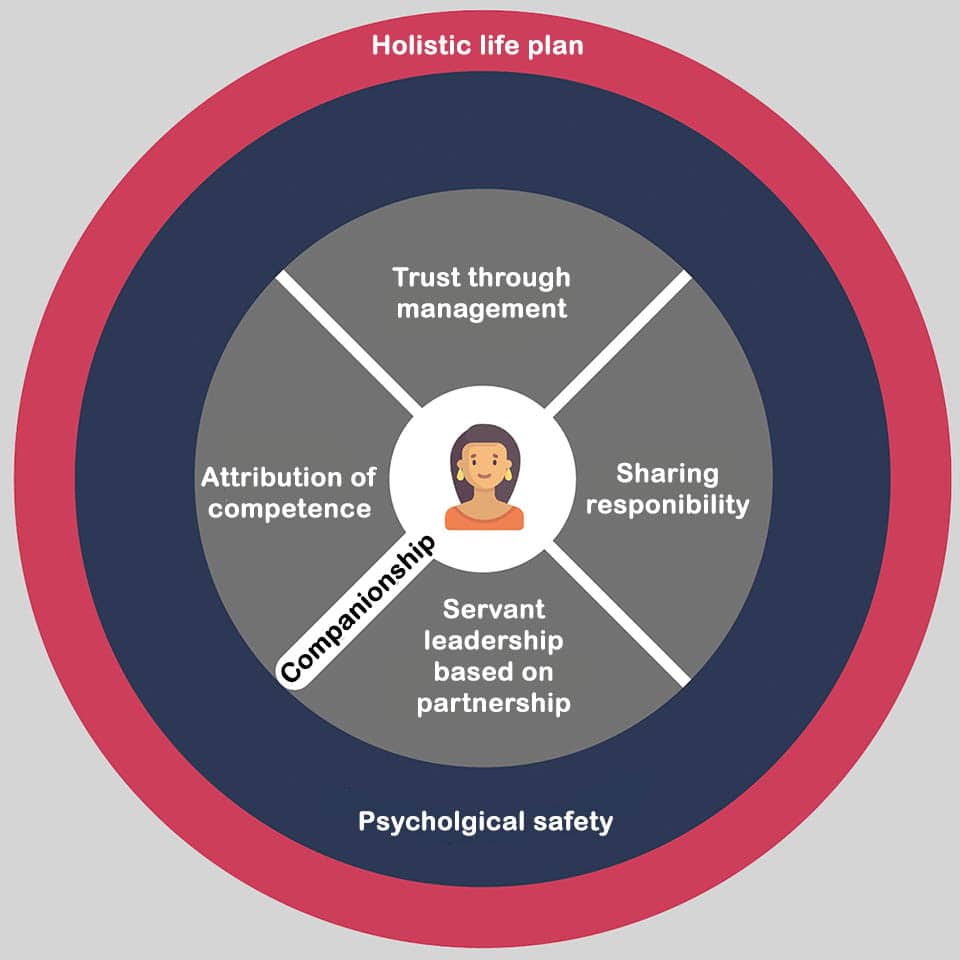Women want to lead – but under different auspices
A study on women’s leadership preferences
Do you know the storylistening method? No? I didn’t know it either until a few months ago. I came into contact with it very intensively in connection with the scientific work for my recently published study “Women want to lead – but under different auspices”.
Storylistening is a good method for diving deep into the reality of people’s lives and work and for intensively penetrating their experiences in the form of their narrated stories.
I did not use storylistening in a company’s own change process, for which this method fits well, but in the development of a representative study. With the help of this method, I collected exciting stories that answered my questions, which were the basis of the study.
Background to the study “Women want to lead – but under different auspices”
If we look into the executive floors of German companies, we see that women are not represented in the same percentage as men. Despite legal equality, there is obviously an imbalance in the gender distribution here.
One hears again and again that women do not want to take on a leadership position as much as men and would also be less confident of doing so. They would rather shy away from the responsibility and not show enough assertiveness to claim such a position for themselves.
At the beginning of 2021, when there was a very controversial discussion about the legally anchored women’s quota on the boards of German listed companies, I asked myself for the first time how other women actually experience the reality of work? What stories have they experienced? And what do they say about the structural and cultural framework conditions in companies? How attractive are the existing systems for women to aspire to a leadership position?
Conceptual basis of the study
I was interested in what women report who do not hold a C-level position. I wanted to talk to young women who could be considered for a leadership position, to women who were interested in a leadership position but had disappointing experiences, to women who had never dealt with the question before and to women who had already been in a leadership position but had started their own business.
I was interested in these women because the answers to my questions can probably be found in the large number of women who are not (any longer) in a leadership position.
By interviewing different women, I wanted to find out what women value in order to take on leadership responsibility.
Aim of the study
First and foremost, the findings from the study are intended to further stimulate and deepen the dialogue between the sexes on the topic of “women in leadership” within the German economy, as well as to additionally answer the question of why women are currently less represented in top positions than men.
The aim of this study is to show all interested parties options for action in order to specifically promote women into leadership positions. Because it seems obvious that a quota regulation alone will not do the trick. A quota will not help if there are still no women who want to take on a leadership position.
With the help of the findings, companies should be able to design structural and cultural conditions in such a way that talented women are happy to take on leadership responsibilities.
Storylistening – the method
In my search for a suitable survey method, I talked to a scientist from the field of work and organisational psychology, Prof. Dr. Armin Trost from Furtwangen University. According to him, it could be worthwhile to work with the storylistening method in order to find out what the personal and individual thought processes and stories of the women are.
The difference to an empirical survey is obvious. Many questionnaires provide numerical values as findings. The questions are narrow, often closed and usually you can only answer yes or no or give a number between 1-10. It is rare to find out what the respondents really think and feel beyond the series of scales. What is experienced in the company context? Or in relation to leadership? Or in relation to the corporate culture? Joy or frustration? Motivation? Meaningfulness? What problems arise and when? How do people deal with them?
There is no room in a predefined questionnaire for the thoughts, experiences and experiences of the employees. With the help of the storylistening method, however, you get to the core of the problem, you learn more about the individual experiences and the needs of the individual people.
It works a bit like the amber hunt at the Baltic Sea. If you look in the right place and drill in the sand, you can bring the glittering “gold of the sea” out of the sand into the light and make it shine. But which details from the stories are the shining ones can only be decided spontaneously during the interview.
All my interviews were opened by an identical introductory question. The rest of the interview was free. This approach allowed the women to formulate their own individual answers to the question. The opening question was:
What would it take for you to want to be in a leadership position?
I listened to fifty women and heard their stories from their working world. In my case, this resulted in a realistic picture of the reality of women’s work by opening up a space for dialogue.
The added value of storylistening in a business context
Companies that understand that the stories of the employees in their company play a major role in the functioning of the company can gain completely new perspectives through storylistening. They can learn a lot about themselves and initiate change.
The goal should be to learn as much as possible about special events, experiences and the emotions of employees that are related to the company.
Storylistening can, for example, make a change process more manageable if employees feel seen and valued and are allowed to support the change with their story. It is a method that can take the threat out of the change process by inviting dialogue. As a rule, employees find this very positive. If the stories are then shared, understanding for each other develops and cohesion is strengthened.
But there is one thing to keep in mind: If the employees in the company are not yet ready to let others look into their innermost feelings because the necessary trust in the management is lacking, then the stories that the company needs to successfully shape the change will not be told. In such a situation, it is advisable to be accompanied by external consultants, because there is much less bias towards them. Used correctly, this method can reveal the real stories of people in order to make the work in companies fit for the future.¹
Preferences of the women interviewed
Seven main preferences of women on the topic of leadership can be derived from the interviews. These show what women mainly value in terms of structural and cultural framework conditions in companies if they were to take on a leadership position.
The following figure provides an overview:
Figure: Preferences of female managers
You can read in detail about the preferences of women and many quotes in my study.²
Recommendations for action for companies
The stories of the fifty women and the preferences derived from them can help to better empathise with women and learn to understand their needs. In order to then offer jobs with leadership responsibility that women are happy to say “yes” to.
In concrete terms, this means that companies should first narrow down the problem and then look at their structural and cultural framework. And then, in a third step, concrete solutions can be considered.
An under-representation of women in leadership positions can be understood as a problem, for example, if leadership potential remains unused, i.e. leadership positions are filled externally, although the potential would be available internally. More often, it can be observed that the proportion of women in management trainee programmes is not reflected in the filling of management positions by female managers. Therefore, women’s preferences should be looked at more closely when female high potentials could take on leadership responsibility, but do not want to due to given framework conditions.
It is also advisable to systematically examine the structural and cultural framework conditions in accordance with the women’s preferences mentioned above. Talks and workshops with the women concerned in the company are helpful here. The central guiding question is identical to the question posed in this study: What would have to be the case for you to want to take a leadership position?
Then the structural and cultural hurdles that the women name should be analysed and evaluated in more detail.
Then it is a matter of developing and implementing suitable solutions. It is advisable to start with overcoming the hurdles that have a strong impact and can be changed at the same time. Various approaches to solutions can also be found in the study.
Companies that set out to establish gender equality and support individual life plans will probably find out sooner or later that not only women but also men will welcome corresponding changes.
Notes:
[1] Ms Gehrke-Vetterkind will be happy to support you if you want to enter into a dialogue with your staff and use storylistening as a method. Simply arrange a free initial consultation.
[2] Here you can download the study in German.
If you like the article or would like to discuss it, please feel free to share it in your network.
Lilian Gehrke-Vetterkind has published two more posts on the t2informatik Blog:

Lilian Gehrke-Vetterkind
Lilian Gehrke-Vetterkind is a business consultant and trainer for diversity & inclusion and corporate culture. As a graduate in business administration, she has many years of experience in human resources development and adult education. She is a trained systemic consultant for organisational development and change management, a communication consultant according to Schulz von Thun, and a certified diversity trainer.
Since mid-2021, she has been managing companies in the development and implementation of strategic diversity management concepts as the founder and owner of Gehrke & Vetterkind Consultants. She also provides training on topics such as inclusive leadership and is a cooperation partner of the Haufe Academy, where she helped design the Diversity & Inclusion Master Class.


